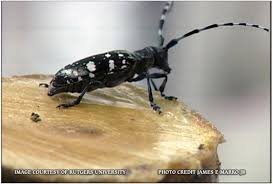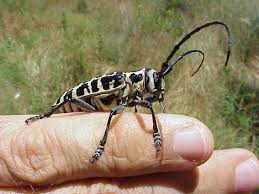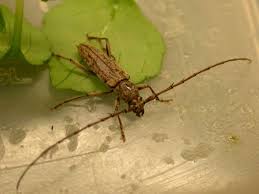Please help identify this bug (Detailed pictures)
- Thread starter Ace Yonder
- Start date
Diabolical666
Well-Known Member
its so ugly its kinda cute. You should actually be asking an entomologist. we are just growers here in this forum
Ace Yonder
Well-Known Member
Yeah but you can clearly see it is sitting on a pot plant, can't really post those pictures to a legit entomologist website haha, was hoping that some of the more garden minded people might recognize it, perhaps entomologists that share our curious hobbyits so ugly its kinda cute. You should actually be asking an entomologist. we are just growers here in this forum
Ace Yonder
Well-Known Member
I guess in a couple of pictures the trichomes aren't so in your face if you don't know what you are looking for. It's a pretty crazy looking bug either way tho, right? At least the response on here confirmed that I'm not the only one who doesn't recognize it. Don't have to turn in my Amateur Bug Hunter's Badge quite yetNot sure but I don't think an entomologist would recognize that plant as pot, then again, I could be wrong.
Ace Yonder
Well-Known Member
Okay after exhaustive research and failed attempts at joining entomologist forums (You wouldn't believe how much less active that community is than this hahaha) I am fairly convinced that it is some sort of Mutillid Wasp / Velvet Ant, but I haven't hammered down which specific species it is. But that is the closest thing to having a similar body structure.
subgrounds
Active Member
I concur with the original "lovechild of tarantula/ant theory." Hope that helps!
Ace Yonder
Well-Known Member
Update! Positively identified as a type of Longhorn Borer Beetle, Ipochus Fasciatus.
Ace Yonder
Well-Known Member
No, those are a FEW kinds of longhorn beetles. There are over 20,000 species of longhorn beetle. Here is the full classification of the type I found in my garden. I assure you, Ipochus Fasciatus is what I found, and Ipochus Fasciatus is a longhorn beetleNot it! This is Long horn bore beetle
 We get the black and white ones.
We get the black and white ones.

Kingdom: Animalia – Animal, animaux, animals
Subkingdom: Bilateria
Infrakingdom: Protostomia
Superphylum: Ecdysozoa
Phylum: Arthropoda – Artrópode, arthropodes, arthropods
Subphylum: Hexapoda – hexapods
Class: Insecta – insects, hexapoda, inseto, insectes
Subclass: Pterygota – insects ailés, winged insects
Infraclass: Neoptera – modern, wing-folding insects
Superorder: Holometabola
Order: Coleoptera Linnaeus, 1758 – beetles, coléoptères, besouro
Suborder: Polyphaga Emery, 1886
Infraorder: Cucujiformia Lameere, 1938
Superfamily: Chrysomeloidea Latreille, 1802
Family: Cerambycidae Latreille, 1802 – long-horned beetles, capricornes, cérambycidés, longicornes
Subfamily: Lamiinae Latreille, 1825
Tribe: Parmenini Mulsant, 1839
Genus: Ipochus LeConte, 1852
Species: Ipochus fasciatus LeConte, 1852
Also, here is a page about them with more pictures, not as clear as mine and of dead specimins, but still clearly the same creature http://bugguide.net/node/view/125447/bgimage
Dr.Pecker
Well-Known Member
Good job!No, those are a FEW kinds of longhorn beetles. There are over 20,000 species of longhorn beetle. Here is the full classification of the type I found in my garden. I assure you, Ipochus Fasciatus is what I found, and Ipochus Fasciatus is a longhorn beetle
Kingdom: Animalia – Animal, animaux, animals
Subkingdom: Bilateria
Infrakingdom: Protostomia
Superphylum: Ecdysozoa
Phylum: Arthropoda – Artrópode, arthropodes, arthropods
Subphylum: Hexapoda – hexapods
Class: Insecta – insects, hexapoda, inseto, insectes
Subclass: Pterygota – insects ailés, winged insects
Infraclass: Neoptera – modern, wing-folding insects
Superorder: Holometabola
Order: Coleoptera Linnaeus, 1758 – beetles, coléoptères, besouro
Suborder: Polyphaga Emery, 1886
Infraorder: Cucujiformia Lameere, 1938
Superfamily: Chrysomeloidea Latreille, 1802
Family: Cerambycidae Latreille, 1802 – long-horned beetles, capricornes, cérambycidés, longicornes
Subfamily: Lamiinae Latreille, 1825
Tribe: Parmenini Mulsant, 1839
Genus: Ipochus LeConte, 1852
Species: Ipochus fasciatus LeConte, 1852
Also, here is a page about them with more pictures, not as clear as mine and of dead specimins, but still clearly the same creature http://bugguide.net/node/view/125447/bgimage





